Resources
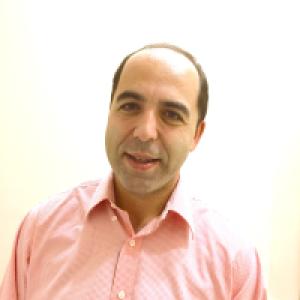
In the quest for understanding the dynamics of Muslim societies, understanding Islam is not always the key. This was the theme of my last post on Islam and Decolonization. I would like to offer more thoughts on a related topic: racism, or at least racial and ethnic prejudice, in the Muslim societies of West and Central Asia that I focus on in modern history classes I teach. (To be clear, I most often focus on Afghanistan, Egypt, Iran, Turkey, and Soviet Central Asia.) My purpose is to demonstrate that Muslim societies are in several respects not so very different from our own. I’m sure I’m not alone in finding that some of the students, especially undergraduates, arrive in the classroom with a spoon-fed narrative about Islam that is disturbingly unitary: Islam, which is a tangible thing, has certain characteristics wherever it has spread, including shari’a (also a tangible thing), oppression of women, rejection of modernity (another thing!), and, probably, violence. This uniformity is so resolute that it sometimes even elicits admiration. Whatever differences exist across the Muslim world are not as important as these commonalities. Talking about ethnic conflict, and the very real ethnic hatreds, prejudice, and stereotyping that I have encountered in every Muslim society I’ve lived in or visited, is a valuable endeavor in its own right as a tool of historical inquiry, and also a helpful way to complicate the unitary Islam narrative. The problem is the vast majority of my students understand ethnic conflict through one prism, “racism,” which cannot be avoided in the classroom. To say the least, “racism” is a loaded term, one that, for many students at my university, carries all kinds of historical baggage with little direct relevance for the societies I deal with in class. To eschew the term entirely, however, would represent a missed pedagogical opportunity. It is true that ethnic conflict in many Muslim countries lacks the characteristics of racism in North Carolina. However, many of my students have no other frame of reference for understanding a different society (aside from the framework of unitary Islam). My goal is to help students relate to the countries whose history we are studying in terms that are understandable and familiar. An example: one topic that comes up frequently in my classes is the relationship between Turks and Kurds in post-Ottoman Turkey. After students have done the assigned readings, my starting point is to ask: what is a Turk, what is a Kurd, and why is there tension today between these groups? In a dynamic session, several themes begin to emerge in discussion: language, region, culture, rural/urban origin, religion, and class. After exploring these themes in detail, it is possible to talk about the role of ethnic nationalism, the Turkish state’s language and education policies, and the social impact of rural-urban migration. The fact that region and class attract the lion’s share of attention in our discussions is meaningful. These are two themes that all of my students understand. My approach resembles that of my hero Miss Marple, who tackled every new case by framing it in terms of the characters living in her home village. It can be risky to ask students to learn about different societies through the frames they are most familiar with. But I almost always find that, if nothing else, students come out of my classes disabused of the fantasy of unitary Islam. In an insightful recent post, Sufia Uddin wrote about the implications of the “racing” of Islam in media and politics. I am interested in the possibilities and pitfalls of talking about race, and racism, among Muslims in the Islamic world. Where does our understanding of racism apply, and where does it not? How can American frames of reference be harnessed for students’ benefit, without reducing the complexity of other societies in their eyes? I welcome your suggestions and ideas.
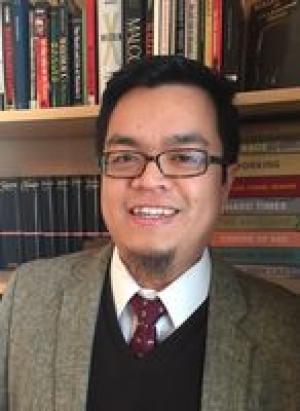
Not too long ago I was invited to join a panel with the ambitious aim of putting into context for the campus community the rising tide of anti-Muslim sentiment and the Islamophobia industry behind it. I was specifically requested to open the gathering with a 10-minute Islam 101 in order to dispel common misconceptions of Islam and Muslims. The event was well-intentioned, but the initial framing of the event and my role in specific, I realized, would only serve to reinforce that religion and Muslim religiosity somehow lie at the heart of the problem. The part that was asked of me implied that there exists a mainstream, normative, conventional understanding of Islam that did not warrant prejudice. As this line of thinking goes, anti-Muslim sentiments would surely subside if only more people knew about this safe, good, and moderate Islam. According to this narrative, there is a right kind of Islam out there and the burden of responsibility lies with those right-thinking Muslims to push back and make themselves heard. What this narrative leaves unaddressed is the complicity and accountability of the larger majoritarian society in uncritically perpetuating anti-Muslim sentiments. Instead, religion is foregrounded as what matters most. This line of thinking eerily echoes the deeply problematic expectation that race issues in America are a “black problem” in which the burden of change lies with black communities. In both cases, the larger systemic social, political, legal, and economic issues are overlooked or worse, exonerated. My argument is not that Islam or religion is altogether irrelevant or unimportant in conversations like these. What is problematic is the continual recourse to find answers (and false comfort) in explanations centered on religious motive and identity when conflicts, crises, and tragedies transpire. When a discussion is framed narrowly around Islam or religion, we end up missing the bigger picture. The above event I described, which was eventually productively reframed, brings to the fore a particular pedagogical challenge that many scholars of Islam face. In the few minutes I was granted, how could I speak beyond the lens of religion to highlight other structural problems of greater significance? Part of the dilemma is one of time. When I think of my role as a teacher, I often take for granted the generous amount of time I have with my students each semester. Instead of a mere fifteen minutes, my students and I engage in conversation and critical inquiry on a wide array of topics related to Islam and Muslims over the course of fifteen weeks. With each class meeting we progressively build our knowledge base, nuance our language, and continually circle back to thorny issues with keener questions and alternative perspectives. When we are invited to speak we remain committed teachers, but we must carry out our work without the benefits that a semester of engagement affords. Moreover, we do not have the ability to slowly build a thoughtful base of knowledge. Speaking opportunities are typically topical and the range of topics we are asked to speak on can be dizzying, if not outright perplexing. We are invited to speak on the deeply problematic categories of terrorism and radicalization. We are asked to provide background and context to wars and conflicts in Muslim majority countries. We are asked to weigh in or explain headline issues like the refugee crisis, the position of presidential candidates, anti-Muslim hate crimes, and most recently the burkini ban across Southern France. Because of our place and position, our “expertise” on Islam is sought – never mind what our areas of specialization actually are. Time and again, we are deployed, both intentionally and unintentionally, to reinforce religion – especially Islam – as the primary frame of reference. While respecting the request and good intentions of event organizers, there are several ways we can work to change or better the discourse. Structural Reframing: Whether speaking individually or on a panel, the typical expectation is that we will say our part and then field a handful of questions. I have found it useful to collaborate with organizers well in advance in imagining alternative models of engagement. Might colleagues in other disciplines be invited in addition to or in place of ourselves? Would a roundtable or town hall style conversation be better suited for a larger audience? When faced with a smaller and more intimate group, could participants be engaged through a service experience or could the discussion be facilitated around a more reflective and participatory fishbowl dialogue? Interventions like these at the organizational level can be used to introduce a different horizon of understanding, one that extends beyond religious reductionism, by simply changing the angle of approach or the terms of the conversation. Engaging the Audience: At one-off events it is often difficult to gauge where an audience is coming from. It can be worthwhile to quickly poll or even pose direct questions to those in attendance to better understand their expectations and concerns. At times it can even be helpful to even call into question problematic premises or assumptions about the role and significance of religion. For example, questions of scriptural interpretation arise frequently at many events, especially those concerning violence. The assumption is that somehow the Qur’an directs the actions of its readers. Of course, human behavior is hardly driven by such a crude correlation of text to action. Moreover, texts, even scriptural ones, are incredibly malleable and open to interpretation. By simply spotlighting erroneous assumptions, the audience can be prompted to explore the many other factors and influences at play. Speak Beyond Religion: For a variety of reasons, strategic planning is not always possible. In fact, more often than not, I only have at my disposal the speaking time I am given and the content I choose to convey. In these situations, I believe it is still important to push past an exclusively religious frame of reference. Religion is only one identity marker that inflects the realities we face today, and yet the singular attention to religion in our attempts to understand these realities serves to obfuscate more pressing systemic problems that underlie them. We may be scholars of religion, but as our research and work in the field continually demonstrates there are many other intersecting power structures shaping the persons, societies, and ideas that we study. What structural inequalities are peoples responding to? What role do state actors and colonial histories have in creating, perpetuating, and worsening the situation in question? How is religion or Islam being coopted or instrumentalized? What are the identity politics at stake that continue to draw religion or Islam into suspicion? Speaking about religion and Islam is not just a matter of content, but also one of context. By drawing connections to wider cultural, social, political, and economic questions we can raise the level of discussion and deepen the narratives at work in the public discourse.
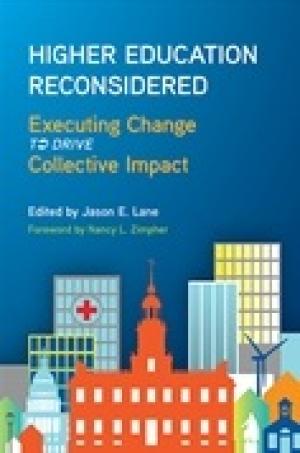
edicatopm“[I]f we can shift our way of thinking from isolated interests to collaborative goals and ultimately to collective impact, we can change the world,” writes Jason E. Lane in his introduction to Higher Education Reconsidered (6). Changing the world is an ambitious goal for a book of essays, but the authors and editor are convinced that the systemic economic and social inequality in our society can be addressed through systemic fixes to higher education attainment with practical tools that address the pathway from cradle to career (107). Read on their own, some of the essays seem to promote the idea that gathering and crunching data is a cornerstone of educational improvement. The book does not offer a direct critique of the present educational trend of data-driven assessment. However, the book may help teachers move beyond the rush to find quick fixes to education. The collective impact strategy it promotes is not easy or quick: bringing together a diverse group of leaders from various sectors to solve a common problem may be difficult and may involve finding unique strategies to address the problems at hand (12-13). The essay on change management by Scott Keller and Carolyn Aiken likewise moves beyond conventional wisdom and provides practical tips for successful organizational change (27-60). This collection of essays emerged from a conference at the State University of New York. In many ways, it reflects the context of a large public university system. At first blush, this seems rather different from the typical smaller private institutions where many religious and theological studies programs are housed. However, educators and administrators in religious and theological studies face many of the same challenges outlined in the book. They may particularly resonate with the need for systemic change to resolve issues of inequality. Religious and theological studies programs are often plagued by a lack of diversity among those who attain degrees, despite institutional goals that point in more inclusive directions. Adapting the insights of collective impact may be a helpful strategy for religious and theological education programs as they work toward identifying and promoting effective solutions to thorny educational problems in religious and theological studies. Undergraduate and graduate programs in religion and theology might work together across institutional boundaries to identify common educational strategies that contribute to student success. Faculty from various sub-disciplines of religion and theology might work together to identify ways to build students’ core knowledge. The book suffers slightly from the uneven quality and topical range of its essays, but that is nothing new for books that are the products of conferences. Readers may need to exercise some patience with examples and parlance drawn from business, healthcare, and large higher education systems. Altogether, it is a helpful book. I recommend it to educators and administrators looking for tools to lead change in religious and theological higher education.
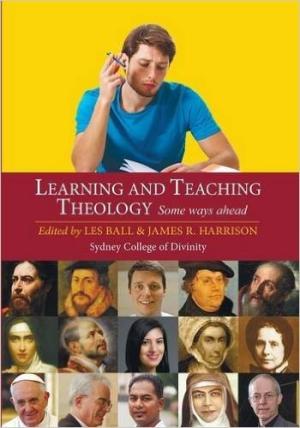
The genesis of this book was a Learning and Teaching conference held at the Sydney College of Divinity that focused on issues and practices in theological education from the perspective of Australia and New Zealand. The aim of the book is to “generate further impetus in charting effective ways to make progress along the important journey of delivering relevant contemporary educational experiences for the learners of theology” (7). For the most part the book succeeds in doing this. It contains seven sections. Section 1, and in particular the essay “Where are We Going,” sets the stage well for the other essays and sections of the book. This essay argues that the philosophical starting point for theological education is student-centered learning and teaching. This pedagogical philosophy then answers the questions about what shall be taught (content of theological learning and teaching), how it will be taught (methods of learning and teaching), and how the curriculum is built. Section 2 gives a biblical road map, using the apostle Paul as a model of a theological educator, that centers on learning communities and their effects on the immediate context and implications for theological education today. Section 3 constitutes a strength of the book since it brings together the philosophical, curricular, and theological theories about learning and teaching into an integrative whole connected to formational assessment. The various essays are informed by the works of David Ford and Walter Brueggemann, integrative and transformative learning theories, and multiple intelligences, to name a few. The book transitions in Sections 4 and 5 to a more practical focus that brings theory and practice together from the medical and health science disciplines to enhance theological education, and the use of technology. The two essays in Section 4 look at lessons that theological education can learn from medical education; they challenge theological education to move from an emphasis on competencies to a focus on capabilities that adapt to contextual changes that in turn improve ministerial practice. The essays in Section 5 center on e-learning technologies and its impact on the learner from formational, instructional design, gamification, and embodiment perspectives. The last two sections continue to emphasize practice and give creative examples of innovative practices from theological practitioners around teaching and learning methodologies. These include problem-based learning, transformative pedagogy in the context of cross-cultural experiences and traditional courses, and workplace formation. The last two essays feature teaching and learning from a non-Western context. The editors laid out the direction of the book well in that it generally moves from a theological, philosophical, and pedagogical core to learning and teaching practices. However, in a book of this nature with multiple authors, there is an unevenness in the depths of the essays. That is, some essays give excellent theoretical depth and description, fresh analysis of data, creative accounts of practice that oftentimes challenges the theological status quo, or thoughtful theological and pedagogical integration, while other essays do not. Having said this, the book does present fresh thinking and offers innovative practices about the theological education enterprise and as a result urges continual and effective development.
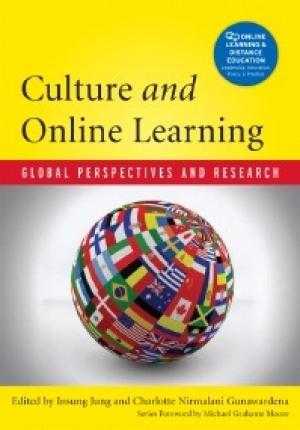
This helpful collection of seventeen essays addresses two important concerns within religious and theological studies: culture and online learning. Scholars of religion are giving increasing consideration to culture. (A search of Amazon for books on “religion and culture” yielded a hundred pages of “hits.” The first four books were simply entitled Religion and Culture.) Furthermore, more and more courses in religion and theology are offered online. Surprisingly, little research has been done in culture and online learning, and this book seeks to address this lack. Authors in this collection hail from Europe, North and South America, Asia, and Australia. (Unfortunately, none are from Africa.) The book appears as the third in a series, Online Learning and Distance Education. Editors Jung (from Japan) and Gunawardena (from Sri Lanka, teaching in the U.S.) write solely or collaboratively in eleven of the seven essays. The essays are grouped around eight themes: (1) learners, learning, and learner support, (2) non-native speakers, (3) facilitating learning, mentoring, and professional development, (4) learning design, identity, gender, and technology, (5) visual culture, (6) leadership, (7) quality, and (8) research. Many of the authors wrestle with a definition of culture. In the first essay, “Perspectives on Culture and Online Learning,” the editors write, “Culture impacts every facet of online learning, from course to interface design, to communication in a socio-cultural space, and to the negotiation of meaning and social construction of knowledge; thus a definition of culture that is flexible, dynamic, and negotiable is more appropriate to understand the online learning context” (1). Interesting insights are scattered through this collection. In “Online Identity and Interaction,” Gunawardena notes that students from Sri Lanka and Morocco “look to the online medium as a liberating environment that equalizes status differences” (35). In “Emerging Visual Culture in Online Learning Environments,” Ilju Rha (South Korea) urges online educators to integrate more visuals in their online courses. In “Accounting for Culture in Instructional Design,” Gunawardena, Casey Frechette (US), and Lumila Layne (Venezuela) introduce the Wisdom Communities instructional design model (WisCom), which “was developed to inform the design of collaborative online learning experiences” (57). (For more about WisCom, see https://prezi.com/1unppl6dh2a-/new-model-new-strategiesinstructional-design-for-buildingonline-wisdom-communities/.) In “Transformative Learning through Cultural Exchanges in Online Foreign Language Teaching,” Kerrin Ann Barrett (US) includes tips for instructors, such as “remember to breathe,” and tips for learners, such as “show your creative side in activities (asynchronous and synchronous)” (146). In “International Interpretations of Icons and Images Used in North American Academic Websites,” Eliot Knight (US), Gunawardena, Elena Barberà (Spain), and Cengiz Hakan Aydin (Turkey) write, “Many of the images and icons used in online environments depend on the meanings, concepts, metaphors, objects, and so on that are bound to the particular cultural context in which they were designed” (149). Just as neither religion nor culture is monolithic, neither is online learning. This stimulating collection from around the world will help online teachers to negotiate better the various cultural divides and thus offer our students better online learning experiences.
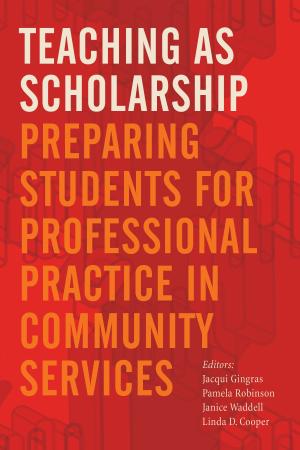
This book brings together faculty reflections on pedagogy and inter-professional collaboration from a broad range of disciplines within a single institution in Toronto: Ryerson University. While a single institution may appear to provide only a limited contextual perspective, the nature of the varied disciplines represented here provides a diverse set of resources, drawing from early childhood studies, nursing, disability studies, social work, sociology, city planning, and midwifery. Though the fields of theology and religion are not represented among the contributors, educators in theological and religious education will resonate with the need to better equip students for inter-professional engagement. Though all contributors are from the same institution, the commonality or coherence among chapters ends with the institutional affiliation of the authors. The editors note the book’s lack of coherence, and justify this by saying that the “frontiers” of community-services-related learning “are not neat, formulaic, or easy to navigate” (5). For this reason, reading this text cover-to-cover can be a disappointment, since the chapters are not of equal quality, nor do they create any obvious structure or overall argument. That said, there are gems in particular contributions for those interested in learning about teaching techniques and reflections that draw from critical pedagogies and integrative approaches, bringing the best of new theories in education. For instance, in “Drawing Close: Critical Nurturing as Pedagogical Practice,” authors May Friedman and Jennifer Poole bring together insights from Indigenous studies, Black feminist thought, maternal pedagogies, and mad studies to argue for a way of being in the classroom that promotes a nurturing relationship between student and teacher, challenging the Enlightenment and Western ideals of independence as a goal of education. These authors call for a suspension on neoliberal concerns for risk and lack of efficiency, instead arguing that an interdependence approach requires the risk of blurring the distinction between teachers and students (96). If a reader of this book were to choose one chapter to read from among the many contributions, this would be the chapter to focus on, and the bibliography provides additional resources to pursue. Other chapters included interesting suggestions and interventions in education, such as “Educating for Social Action among Future Health Care Professionals” which focused on a learner-centered model for course creation. This chapter includes appendices for how the authors Jacqui Gingras and Erin Rudolph were able to craft a course with considerable input from students regarding course themes, which assignments they would have to complete, and what grading rubrics would entail. Other chapters (3, 8) draw from narrative theory and describe the way students are taught to listen to the narratives of clients as well as to their own personal narratives. While this book’s chapters are not equally helpful, the insights available in a few choice chapters are worth the read.
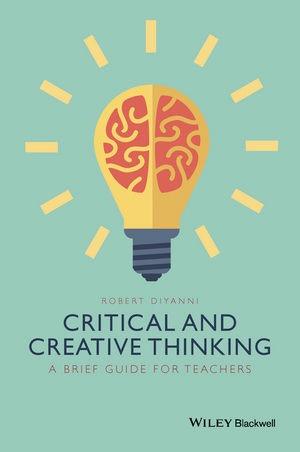
As teachers in religious studies and theology departments, one of our principal pedagogical claims is that we teach students to think critically and creatively, but we are not always clear on what this means in practical terms. This readable book by Robert DiYanni helpfully gathers research and writing from a wide variety of disciplines to help teachers define and apply critical and creative thinking for themselves. The book’s organization makes sense as it leads the reader through concepts, practical concerns, and application. Brief “interchapters” unite the flow of the book around one master of critical and creative thinking, Leonardo da Vinci. Each chapter ends with a well-crafted list of writing prompts to help the reader – both teachers and students – to apply the chapter’s concepts. For example, chapter 4 focuses on strategies and applications of critical thinking, and so the end-of-chapter prompts call on the reader to analyze arguments, evaluate scenarios, and deploy specific critical thinking strategies. Chapter 5, which examines approaches to creative thinking, provides prompts that invite imagination, innovation, and inventive solutions to problems. Essentials of critical thinking such as asking questions, seeking clarification, gathering evidence, evaluation, and reflection are discussed at length with colorful examples from notable historical events and popular culture. For instance, one chapter features a collection of headlines and other snippets of news coverage of the murder of Kitty Genovese. DiYanni invites the reader to consider what sorts of inferences and judgments various news sources made in response to this famous case (71-74). Another section examines the methods that Sherlock Holmes used in his legendary detective work (109-112). DiYanni argues, however, that critical thinking is not sufficient by itself and can even be reductive and dangerous (xi) if it is not joined by robust creative thinking. He persuasively shows that creative thinking is a necessary adjunct to critical thinking and leads to innovation and whole-minded approaches to problems. DiYanni’s coverage of creative thinking likewise draws on a wealth of examples from creative people such as choreographer Twyla Tharp and checklist-innovator Atul Gawande. DiYanni’s book thoroughly covers critical and creative thinking, but it may not live up completely to its subtitle, A Brief Guide for Teachers. There is not much by way of specific advice to teachers on how to teach students to be more critical and creative thinkers. Rather, the book reads like a textbook for a class whose subject matter is creative thinking itself. As such, the exercises in the book would have to be adjusted for application to religious studies and theology courses. Another small critique is that DiYanni argues early in the book that cultural forms and social locations, including religion, are “blocks” to critical thinking (10). While we can agree that people’s contexts can limit and define their worldview, religion professors know that it is not particularly helpful to consider religion as a hamper to thoughtfulness. These criticisms aside, this book is a helpful addition to the literature on critical and creative thinking, and its focus on application – even if not explicitly linked to pedagogical advice – provides welcome tools to promote critical and creative thinking in ourselves and our students.
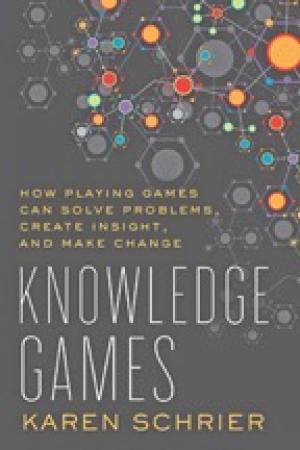
The first section of this book is devoted to working through the complex definition of what constitutes a “knowledge game,” and more specifically, what does not. Schrier’s book is a substantial literature review of the vast – and rapidly growing – field of games that contribute to knowledge production. “Knowledge games,” by her definition, are “the set of practices, contexts, designs, and relationships that emerge from and around those games with a goal or sub-goal of generating new knowledge about humanity, society, the universe, and any previously unknown phenomena” (26). In contrast to games such as “citizen science games,“ “crowd games,” “collective games,” “participatory games,” and “human games,” Schrier takes great care to delineate that she is exploring only those games which seek to produce knowledge, solve authentic, applicable problems, and/or “generate new ideas and possibilities for real world change” (25). A few of the games she examines include those she designates as “cooperative contribution games” (Happy Moths, Citizen Sort, Reverse the Odds), “analysis distribution games” (VerbCorner, Who Is the Most Famous?, IgnoreThat!, Apetopia), “algorithm construction games,” (The Restaurant Game, Foldit, EteRNA, The SUDAN Game, Which English?), and “adaptive-predictive games” (SchoolLife), although she notes this final category is not yet robust, being instead “the next frontier of knowledge games” (30-31). The second section of Schrier’s book tackles the challenging question of “why” knowledge games. That is, in what ways might knowledge games contribute to problem-solving? What kinds of motivation to play exist within these games, which are often produced very cheaply and without access to the million dollar production budgets of games in the entertainment world? Further, to what degree is social interaction nurtured or constricted by such games? Schrier acknowledges that these are complicated questions that require deeply contextual responses. She does not really offer answers, instead choosing to sketch out a brief summary of relevant research findings that point to principles related to motivation and games. The final section of this book turns towards “perspectives, potentials, and pitfalls” to be found in the midst of knowledge games. While Schrier draws on significant theorists and wider literatures here (for example, Lave and Wenger, Jenkins, Benkler, Gee) she only lightly engages issues of ethics, and leaves entirely untouched pragmatic questions of pedagogy. This book is not likely to be of much interest to people teaching in the fields of religion or theology, with the limited exceptions of those for whom shared knowledge creation in the midst of significant amounts of data are of pressing concern, or those for whom games are a specific focus. In that case Schrier’s appendices, where she lists categories of knowledge games along with examples, and where she enumerates a significant set of design principles, will prove useful. Aside from those small exceptions, this book is not likely to be pertinent to the readers of Teaching Theology and Religion.
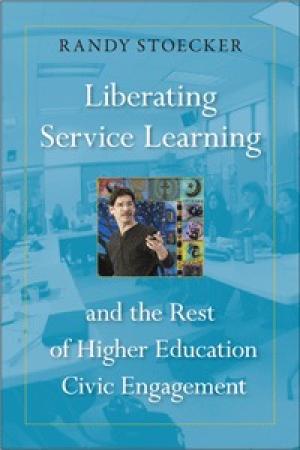
The double entendre in this book’s title may be clichéd but it is often apt, and in this case Randy Stoecker makes a strong argument that service learning and the rest of higher education civic engagement (“service learning” functions as a catch-all term) is in need of liberating so that it can be liberating. Stoecker accuses “institutionalized service learning” (ISL), as he calls the prevailing practice, of reinforcing an oppressive neoliberal political-economic order. As a faculty member of the University of Wisconsin, he speaks from experience. What keeps most service-learning practitioners captive, Stoecker asserts, is a failure to theorize about how service learning does and/or could operate. He offers a theoretical view that enables him to (1) reflect on and criticize ideas in current practice and (2) project alternative ideas as points of articulation for liberating service learning – in both senses alluded to above. Stoecker develops his vision in twelve chapters divided into three parts. A “prelude,” “interlude,” and “postlude” provide other vantage points, ironizing Stoecker’s implied authority on the matters at stake and illustrating metaphorically the problems and promises of service learning. An index of names and topics is also provided. Part I, “The Problem and Its Context,” surveys the current state of ISL. In chapter 1, beginning with a critical incident from September 2013 – a disciplinary hearing for students who, in support of labor unionization efforts at the University of Wisconsin, occupied the Chancellor’s office – Stoecker explicates his worries about who ISL truly serves. In chapter 2 he recounts the emergence and eventual institutionalization of service learning in U.S. colleges and universities from the late nineteenth to early twenty-first century, emphasizing evidence that suggests ISL has come to serve bureaucratic requirements rather than community initiatives. Chapter 3 makes a preliminary analysis of the avowed and actual theoretical commitments of current practice, pointing to a need for sustained examination of the meaning of four core concepts: learning, service, community, and change. Part II deepens the analysis. The author argues that ISL supposes “learning” is for students to accrue from service. “Service,” then, means charitable giving, rather than helping communities learn how they might wield their own power. So concepts of “community” in ISL neglect political-economic issues of structural injustice. Accordingly, “change” comes to be seen as a matter of advancing individuals within an unquestioned neoliberal order. Part III re-envisions the core concepts. The crucial move is to start with a critical theory of “change” as social change. In this light “community” may be grasped not as a vague given but as a goal; “service”is seen not as charity but as casting our lot together to form community and effect change; and “learning” means learning to be learners in service to a shared struggle for change – in short, learning to be liberated. Although Stoecker offers something to annoy everyone, I still recommend Liberating Service Learning for its challenging examination of the spirit of service learning, in its present state and as it might be in future.
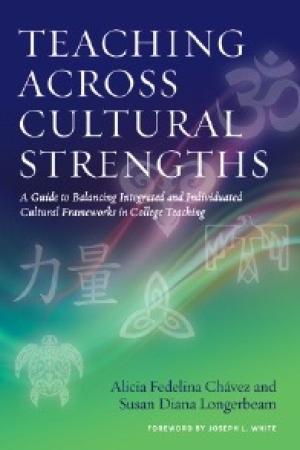
Teaching Across Cultural Strengths is a guide for faculty seeking to apply a cultural lens to their teaching practice; the goal is to learn how to “draw from the cultural strengths of all peoples in service toward equitable and effective teaching and learning” (xx). Chávez and Longerbeam adopt a complex definition of culture visualized in successive layers: artifacts and behaviors, beliefs, values, norms, and underlying assumptions (71). A central thesis is that university teaching in the United States follows an Oxford or Germanic model that has not adequately served students of color. The authors describe a dissonance between an individuated cultural framework characterized by private, compartmentalized, and linear learning and an integrated cultural framework characterized by mutual, cyclical, and contextually-dependent learning. The intent is not to favor one cultural approach over another but to stress the strengths and potential rewards of pedagogy combining a wider array of cultural norms. Based on research and faculty development conducted in Arizona and New Mexico, the book emphasizes Native and Hispano/Latino American students (12). Faculty interested in how their teaching is responsive to religious diversity in the classroom will find more than enough tools for reflection in this volume but only a small number of direct examples. The teaching of evolution in the biology classroom is mentioned as an example of potential incongruence between course content and student beliefs. Immediately following this case is the fascinating story of accommodations made for a medical student who dropped out due to a spiritual injunction against handling human remains (154-55). In their first chapter, the authors introduce their data-supported Cultural Frameworks in Teaching and Learning Model with activities and vignettes meant to help the reader transform their own pedagogy. This chapter has a workbook feel with four graphics in the first eight pages. The second chapter, “Culture in College Teaching,” offers a more readable treatment of the basic principles of the book and I would advise reading it first. The next three chapters offer extended explanations of how to implement culturally balanced teaching supported by a large number of classroom narratives. The sixth chapter is particularly useful since it is organized as “The Top 10 Things Faculty Can Do to Teach Across Cultures.” The final two chapters discuss the authors’ own work in faculty development and how others might initiate similar projects. The book contains a helpful index and two appendices: one describing how to create a “culture and teaching autobiography” and a second containing a short list of books for further learning. When I was in grade school, “Choose Your Own Adventure” books were all the rage. These titles were formatted in a way that let the reader jump around in the text to create her own story. In Teaching Across Cultural Strengths, Chávez and Longerbeam capture a similar spirit by arranging advice, questions, and activity prompts so that faculty can create their own workshop experience either individually or as a group. No one can be a perfect teacher but we are all called to be reflective teachers. In form and content, this book can be a useful asset on that journey and it is highly recommended.
Wabash Center Staff Contact
Sarah Farmer, Ph.D
Associate Director
Wabash Center
farmers@wabash.edu